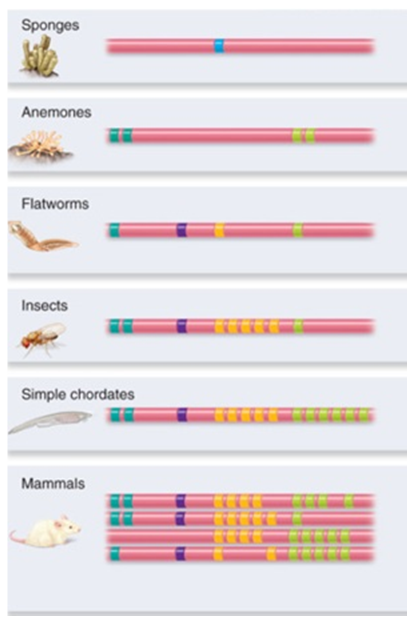The advantage of homologous recombination is that ________.
A. following a splice with Cas9, the ends are joined back together with the induction of a frameshift mutation resulting in an inactive protein
B. following a splice with a restriction enzyme, the sticky ends can be combined with a piece of donor DNA that has the same sticky ends
C. genes from two different sources can be joined together when the wild-types contain homology between the two molecules, allowing DNA ligase to join the naturally-occurring sticky ends
D. following a splice with Cas9, the ends of the chromosome can be seamlessly joined with a piece of donor DNA that has been engineering to contain flanking sequences homologous to the broken chromosome ends
Answer: D
You might also like to view...
You observe a houseplant on your window sill bending toward the bright afternoon sunlight. Being knowledgeable, you wish to explain the molecular events of the phototropic response to your friend. What is the correct sequence that you would describe?
I. PHOT1 attains a phosphate group, and changes shape II. cell elongation occurs on the shady side of the plant III. auxin binds its receptor at target tissues IV. light strikes PHOT1 V. PHOT1 stimulates downward auxin transport on the shady side of the plant VI. light strikes stomates, which close, minimizing water loss VII.cells on the illuminated side of the plant become shorter A) VI, VII, II B) VII, II, III, I C) IV, I, V, III, II D) IV, VI, III, VII E) any of these sequences can initiate phototropism
Look at the chromosomes above and determine how many group(s) of Hox genes are associated with body types for each type of animal. These associations are based on anterior, group 3, central and posterior body development.

A. Mammals: 4 groups; Flatworms: 4 groups; Sponge: 2 groups; Anemones: 1 group.
B. Mammals: 4 groups; Flatworms: 4 groups; Sponge: 1 groups; Anemones: 2 group.
C. Mammals: 11 groups; Flatworms: 4 groups; Sponge: 1 groups; Anemones: 4 groups.
D. Mammals: 27 groups; Flatworms: 4 groups; Sponge: 2 groups; Anemones: 1 group.
E. All animals must have at least 2 groups because all animals have a posterior and anterior end.
Oxygen produced by photosynthesis comes directly from:a
light. b. CO2. c. glucose. d. H2O. e. ATP.
Every hormone in the human body needs to interact with an appropriate receptor on the target cell's membrane before it can cause a response
Indicate whether the statement is true or false